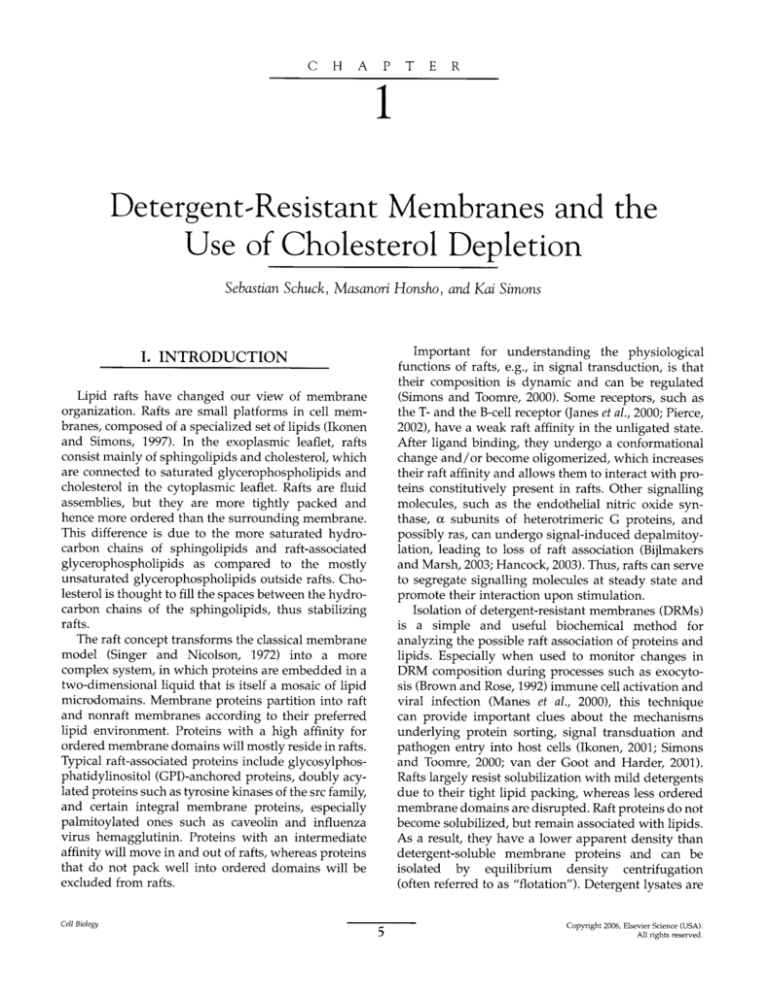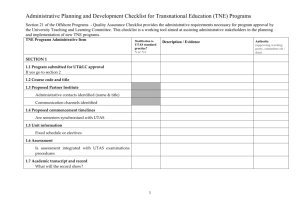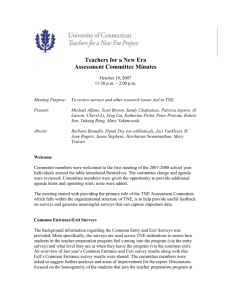
C
H
A
P
T
E
R
1
Detergent-Resistant Membranes and the
Use of Cholesterol Depletion
Sebastian Schuck, Masanori Honsho, and Kai Simons
I. I N T R O D U C T I O N
Lipid rafts have changed our view of membrane
organization. Rafts are small platforms in cell membranes, composed of a specialized set of lipids (Ikonen
and Simons, 1997). In the exoplasmic leaflet, rafts
consist mainly of sphingolipids and cholesterol, which
are connected to saturated glycerophospholipids and
cholesterol in the cytoplasmic leaflet. Rafts are fluid
assemblies, but they are more tightly packed and
hence more ordered than the surrounding membrane.
This difference is due to the more saturated hydrocarbon chains of sphingolipids and raft-associated
glycerophospholipids as compared to the mostly
unsaturated glycerophospholipids outside rafts. Cholesterol is thought to fill the spaces between the hydrocarbon chains of the sphingolipids, thus stabilizing
rafts.
The raft concept transforms the classical membrane
model (Singer and Nicolson, 1972) into a more
complex system, in which proteins are embedded in a
two-dimensional liquid that is itself a mosaic of lipid
microdomains. Membrane proteins partition into raft
and nonraft membranes according to their preferred
lipid environment. Proteins with a high affinity for
ordered membrane domains will mostly reside in rafts.
Typical raft-associated proteins include glycosylphosphatidylinositol (GPI)-anchored proteins, doubly acylated proteins such as tyrosine kinases of the src family,
and certain integral membrane proteins, especially
palmitoylated ones such as caveolin and influenza
virus hemagglutinin. Proteins with an intermediate
affinity will move in and out of rafts, whereas proteins
that do not pack well into ordered domains will be
excluded from rafts.
Cell Biology
Important for understanding the physiological
functions of rafts, e.g., in signal transduction, is that
their composition is dynamic and can be regulated
(Simons and Toomre, 2000). Some receptors, such as
the T- and the B-cell receptor (Janes et al., 2000; Pierce,
2002), have a weak raft affinity in the unligated state.
After ligand binding, they undergo a conformational
change a n d / o r become oligomerized, which increases
their raft affinity and allows them to interact with proteins constitutively present in rafts. Other signalling
molecules, such as the endothelial nitric oxide synthase, ~ subunits of heterotrimeric G proteins, and
possibly ras, can undergo signal-induced depalmitoylation, leading to loss of raft association (Bijlmakers
and Marsh, 2003; Hancock, 2003). Thus, rafts can serve
to segregate signalling molecules at steady state and
promote their interaction upon stimulation.
Isolation of detergent-resistant membranes (DRMs)
is a simple and useful biochemical method for
analyzing the possible raft association of proteins and
lipids. Especially when used to monitor changes in
DRM composition during processes such as exocytosis (Brown and Rose, 1992) immune cell activation and
viral infection (Manes et al., 2000), this technique
can provide important clues about the mechanisms
underlying protein sorting, signal transduation and
pathogen entry into host cells (Ikonen, 2001; Simons
and Toomre, 2000; van der Goot and Harder, 2001).
Rafts largely resist solubilization with mild detergents
due to their tight lipid packing, whereas less ordered
m e m b r a n e domains are disrupted. Raft proteins do not
become solubilized, but remain associated with lipids.
As a result, they have a lower apparent density than
detergent-soluble membrane proteins and can be
isolated by equilibrium density centrifugation
(often referred to as "flotation"). Detergent lysates are
Copyright 2006, Elsevier Science (USA).
All rights reserved.
6
ORGANELLES AND CELLULAR STRUCTURES
adjusted to high density, placed at the bottom of a
density gradient, and centrifuged. Contrary to fully
solubilized material, DRMs and DRM-associated proteins float up the gradient, allowing their recovery
from low-density fractions. As the integrity of lipid
rafts depends on cholesterol, its removal renders raftassociated proteins detergent soluble. Detergent
solubility of an otherwise detergent-insoluble protein
after cholesterol depletion with methyl-~-cyclodextrin
(cyclodextrin) can therefore serve as an additional
criterion for raft association.
However, the composition of DRMs may only
imperfectly reflect the association of membrane components with lipid rafts in cell membranes (Shogomori
and Brown, 2003). DRMs obtained with different
detergents differ considerably in their protein and
lipid content (Schuck et al., 2003). Different detergents
clearly reflect the organization of membranes in different ways, with Triton X-100 and CHAPS seemingly
being the most informative ones. In addition, the
interpretation of experimental results obtained with
cyclodextrin is complicated by the fact that severe
cholesterol depletion may have pleiotropic effects on
membrane functions. Cyclodextrin might be more
effective on cell homogenate than on living cells, but
the reasons for this are not completely clear (Schuck
et al., 2003).
Finally, neither detergent insolubility nor loss of
detergent insolubility after cyclodextrin treatment is a
strict criterion. If a protein is detergent soluble, it may
still have a weak affinity for rafts in native membranes,
and persistent detergent insolubility after cholesterol
depletion can be caused by the remaining cholesterol.
Therefore, neither criterion allows excluding raft
association.
II. MATERIALS A N D
INSTRUMENTATION
Standard chemicals are of the highest purity available. Minimal essential medium with Earle's salts
(MEM, Cat. No. 21090-022), glutamine (Cat. No. 25030024), and penicillin-streptomycin (Cat. No. 15140-122)
are from Invitrogen. Fetal calf serum (FCS, Cat. No.
A15-042) is from PAA Laboratories. One hundred-millimeter (Cat. No. 150350) and 35-mm (Cat. No. 153066)
plastic tissue dishes are from Nunc. Chymostatin (Cat.
No. C7268), leupeptin (Cat. No. L2884), antipain (Cat.
No. A6191), pepstatin (Cat. No. P5318), DL-mevalonic
acid lactone (Cat. No. M4667), and methyl-~-cyclodextrin (Cat. No. C4555) are from Sigma. Lovastatin (Cat.
No. 438185) is from Merck Biosciences. Sixty percent
(w/v) iodixanol (Optiprep, Cat. No. 1030061) is from
Progen Biotechnik, sucrose (Cat. No. 21938) is from
USB, and 10% (w/v) Triton X-100 (Surfact-Amps X100, Cat. No. 28314) is from Perbio.
Ultraclear centrifuge tubes for an SW40 rotor (14 x
95mm, Cat. No. 344060) and for a TLS55 rotor (11 x
34 mm, Cat. No. 347356), as well as SW 40 Ti and TLS55
rotors, are from Beckman. Ultracentrifugations are
carried out using an Optima XL-100K or an Optima
MAX ultracentrifuge from Beckman.
In addition, the following equipment is required:
1.5-ml microfuge tubes, cell scrapers, 15-ml plastic
tubes, 25-gauge needles, and 1-ml plastic syringes.
III. P R O C E D U R E S
A. Preparation of DRMs by Flotation
on a Sucrose Step Gradient
Solutions
1. Phosphate-buffered saline (PBS): 155mM NaC1,
1.5 mM KH2PO4, 2.7 mM Na2HPO4, pH 7.2. To make 1
litre, dissolve 0.21 g KH2PO4, 0.73g Na2HPO4.7H20,
and 9 g NaC1 in double-distilled water and make up to
1 litre.
2. 1 M EDTA: To make I litre, dissolve 372.2 g EDTA
in double-distilled water by adjusting the pH to 8 with
NaOH and make up to 1 litre.
3. 5x TNE: 750 mM NaC1, 10 mM EDTA, 250 mM
Tris-HC1, pH 7.4. To make 1 litre, dissolve 43.8 g NaC1
and 30.3g Tris in double-distilled water, add 10ml
1 M EDTA, adjust pH to 7.4 with HC1, and make up to
1 litre.
4. l O00x CLAP: To make I ml, dissolve 25 mg each
of chymostatin, leupeptin, antipain, and pepstatin in
I ml dimethyl sulfoxide and store a t - 2 0 ~ in small
aliquots.
5. TNE and TNE with protease inhibitors (TNE+): To
make TNE, dilute 5x TNE 1:5 in double-distilled
water. To make TNE+, dilute 1000x CLAP 1:1000 in
TNE just before use. TNE+ has to be prepared freshly
each time.
6. 56, 35, and 5% (w/w) sucrose: To make 100 ml, dissolve 70.75, 40.29, or 5.1 g sucrose in 20ml 5x TNE and
bring to 100ml with double-distilled water. Check
refractive indices of the resulting solutions, which
should be 1.266, 1.154, and 1.021, respectively. Store
at 4~
7. 2% (w/v) Triton X-IO0: To make 10ml, dissolve
0.2 g Triton X-100 in 2ml 5x TNE and bring to 10ml
with double-distilled water. For short-term storage,
keep at 4~ and protect from light to prevent autoxidation. For long-term storage, store aliquots at-20~
DETERGENT-RESISTANT MEMBRANES A N D USE OF CHOLESTEROL DEPLETION
Steps
1. Grow MDCK strain II cells in MEM with 5% FCS,
2 mM glutamine, and 100 U / m l penicillin and streptomycin on a 10-cm plastic tissue dish until confluent.
2. All subsequent steps are performed at 4~ unless
stated otherwise. Remove culture medium and wash
the cells once with PBS and once with TNE.
3. Collect the cells in I ml TNE with a cell scraper.
Transfer suspension into a 1.5-ml microfuge tube and
centrifuge for 5 min at 350xg.
4. Resuspend the cell pellet in 550gl TNE+.
Homogenize by 20 passages through a 25-gauge
needle fitted on a 1-ml syringe. This treatment should
break >90% of the cells without damaging nuclei
(check microscopically).
5. Take 500gl cell homogenate (about l mg total
protein) and transfer into a new microfuge tube. Add
500gl 2% Triton X-100. From now on, strictly avoid
warming of the sample. Mix well by inverting the tube
and place on ice for 30min.
6. Transfer the sample into a 15-ml tube and bring
to 40% ( w / w ) sucrose by adding 2m156% sucrose. Mix
well by inverting the tube.
7. Place the sample at the bottom of an SW40
centrifuge tube. Sequentially overlay with 8.5 ml 35%
sucrose and 0.5 ml 5% sucrose.
8. Centrifuge for 18 h at 39,000rpm (271,000 xg)
using an SW40 rotor. DRMs float to the top of the gradient during centrifugation. Carefully collect 2.5ml
from the top of the gradient with a smooth pipette.
9. To further concentrate DRMs, dilute 1:4 by
adding 7.5ml TNE and transfer into a new SW40
centrifuge tube. Following centrifugation for 2h at
24,000 rpm (100,000 xg) with an SW40 rotor, DRMs can
be recovered from the pellet.
B. Analysis of DRMs by Flotation on a Linear
Sucrose Gradient
Solutions
7
9. Centrifuge for 18h at 39,000 rpm (271,000 xg)
using an SW40 rotor. Collect twelve 1-ml fractions
from the top of the gradient and resuspend the pellet
in I ml TNE. Fractions 9-12 contain the soluble material; DRMs are found in the lighter fractions.
C. Analysis of DRMs by Flotation
o n a n O p t i p r e p Step G r a d i e n t
Solutions
PBS, 5x TNE, TNE, and TNE+; see Section III,A.
1. 10% (w/v) Triton X-I O0: To make 10 ml, dissolve
I g of Triton X-100 in 2 ml of 5x TNE and make up to
10ml with double-distilled water. Alternatively, use
Surfact-Amps X-100.
2. 30% (w/v) iodixanol: To make 5ml, mix 2.5ml
Optiprep, l ml 5x TNE, and 1.5ml double-distilled
water.
Steps
1. Grow MDCK strain II cells to confluence on a
3.5-cm plastic tissue dish.
2. At 4~ remove culture medium and wash the cells
once each with PBS and TNE.
3. Collect and spin down the cells as in Section III,A.
4. Resuspend the cell pellet in 200gl TNE+.
Homogenize as in Section III,A.
5. Take 180 gl cell homogenate and transfer into a new
microfuge tube. Add 20gl 10% Triton X-100 solution, mix, and place on ice for 30min.
6. Add 4 0 0 ~ 1 0 p t i p r e p to bring the sample to 40%
(w/v) iodixanol and mix well by inverting the tube.
7. Place the sample at the bottom of a TLS55 centrifuge
tube. Sequentially overlay with 1.2ml 30% iodixanol and 0.2ml TNE.
8. Centrifuge for 2h at 55,000rpm (259,000xg) with a
TLS55 rotor. Collect two fractions of I ml each. The
top fraction contains the DRMs.
See Section III,A.
D . C h o l e s t e r o l D e p l e t i o n of Live Cells
Steps
1-6. See Section III,A.
7. Using a gradient maker, prepare a linear 5-35%
sucrose gradient in an SW40 centrifuge tube with 4.5
ml each of 35 and 5% sucrose. Cool to 4~
8. Place the sample under the gradient using a
Pasteur pipette, disturbing the gradient as little as
possible (alternatively, first transfer the sample into
an SW40 centrifuge tube and then overlay with the
gradient).
Solutions
PBS; see Section III,A.
1. 20ram lovastatin: To make 2.5 ml, dissolve 20rag
lovastatin in 0.5ml 100% ethanol and 0.75ml 0.1M
NaOH. Incubate at 50~ for 2 h, cool briefly on ice, and
adjust pH to 7.2 with HC1. Bring to 2.5 ml with doubledistilled water and store aliquots at-20~
2. 5 0 0 m M mevalonate: To make 5ml, dissolve
325 mg in 5 ml PBS. Store aliquots at-20~
8
ORGANELLES AND CELLULAR STRUCTURES
3. l OOmM methyl-fl-cyclodextrin in MEM: To make
I ml, dissolve 150mg methyl-[5-cyclodextrin in MEM
just before use and make up to I ml with MEM.
Steps
1. Grow MDCK strain II cells on a plastic tissue dish
or on filter supports. For the last 48 h before the experiment, culture the cells in normal m e d i u m supplemented with 4MM lovastatin (dilute stock solution
1:5000) and 0.25 mM mevalonate (dilute stock solution
1:2000).
2. Wash the cells twice with PBS and add MEM containing 4btM lovastatin, 0.25mM mevalonate, and
10mM methyl-~-cyclodextrin. In the case of filtergrown cells, apply cyclodextrin to both the apical and
the basolateral side.
3. Incubate the cells at 37~ for 30min.
E. Cholesterol Depletion of Cell Homogenate
Solutions
PBS, TNE, TNE+, and 10% (w/v) Triton X-100;
Sections III,A and III,C.
see
1. l OOmM methyl-fl-cyclodextrin in TNE: To make
100ktl, dissolve 15mg methyl-fS-cyclodextrin in TNE
just before use and make up to 100 ~tl with TNE.
Steps
1-4. See Section III,C.
5. Take 180~tl cell homogenate and transfer into a
new microfuge tube. Add 20~1 100mM methyl-[~cyclodextrin, mix, and incubate at 37~ for 30min.
6. For subsequent DRM analysis, cool to 4~ add 20 btl
10% Triton X-100, and incubate on ice for 30 min.
7. Add 440btl Optiprep to bring to 40% (w/v) iodixanol. Mix and take 600 btl and continue as in Section
III,C, step 7.
IV. COMMENTS
Separating DRMs from detergent-soluble material
by flotation using equilibrium density centrifugation
is usually preferable to pelleting. Pelleting of DRMs
from detergent extracts leads to contamination with
other sedimentable material, e.g., cytoskeletal components. In addition, a protein might be pelleted because
of its association with the cytoskeleton rather than
DRMs.
Which flotation gradient to use for DRM analysis
depends on the purpose of the experiment. Continuous gradients give more information about the flota-
tion behaviour of proteins and lipids, but to monitor
changes in DRM composition after, e.g., cyclodextrin
treatment, simple step gradients as in Section III,C are
more convenient. Various density gradient media can
be used, and the choice between sucrose and iodixanol
is largely a question of personal preference. However,
sucrose might be superior if lipids are to be analyzed
by a very sensitive method such as mass spectrometry,
as iodixanol seems to have a weak tendency to follow
lipids during extraction from DRMs.
H o w to apply cyclodextrin strongly depends on
the cell type used. Hippocampal neurons cannot be
exposed to 5 mM cyclodextrin for longer than 20min
(Simons et al., 1998), whereas MDCK cells remain
intact even when treated with 2 0 m M for I h. Hence,
the conditions for cyclodextrin treatment have to be
established in each case. In particular, it needs to be
ensured that cholesterol is the only lipid extracted.
Treating live cells will preferentially extract cholesterol
from the plasma membrane and allows intracellular
cholesterol transport to counteract the effects of
cyclodextrin, whereas extracting cholesterol from cell
homogenate will affect all cell membranes.
V. PITFALLS
Membrane solubilisation by detergent depends on
the molar ratio of detergent to lipid. Therefore, this
parameter, rather than detergent concentration alone,
always needs to be taken into account. In the case of
Triton X-100, a mass ratio of detergent to protein (taken
as a measure for the molar detergent-to-lipid ratio) of
greater than 5:1 seems to be necessary for maximum
solubilization (Ostermeyer et al., 1999).
DRM-associated proteins are separated from
soluble proteins by flotation gradients because of their
low density; they float due to their detergent-resistant
association with lipids. In contrast, the separation of
DRMs from detergent micelles, which contain solubilized membrane lipids, is based largely on differences in size. Given enough time, detergent micelles
will also float as a result of their low density. However,
DRMs are larger than detergent micelles and therefore
float up faster [the sedimentation or flotation velocity
s is given by s = V(p - Pm)/f, where V is particle
volume, p is particle density, Pm is density of the
solvent, and f is friction coefficient. For a spherical particle, V is proportional to r 3, while f is proportional to
r, so that s is proportional to r 2. Refer to biophysical
textbooks for a more comprehensive treatment]. To
avoid contamination of DRMs with detergent molecules and solubilized lipids, it is crucial to ensure that
DETERGENT-RESISTANT MEMBRANESAND USE OF CHOLESTEROLDEPLETION
detergent micelles are well separated from DRMs
under the centrifugation conditions used. The distribution of Triton in the gradient can be measured by
its absorption at 280nm. For other detergents, their
distribution can be determined semiquantitatively by
thin-layer chromatography.
References
Bijlmakers, M. J., and Marsh, M. (2003). The on-off story of protein
palmitoylation. Trends Cell Biol. 13, 32-42.
Brown, D. A., and Rose, J. K. (1992). Sorting of GPI-anchored
proteins to glycolipid-enriched membrane subdomains during
transport to the apical cell surface. Cell 68, 533-544.
Hancock, J. E (2003). Ras proteins: Different signals from different
locations. Nature Rev. Mol. Cell Biol. 4, 373-384.
Ikonen, E. (2001). Roles of lipid rafts in membrane transport. Curr.
Opin. Cell Biol. 13, 470-477.
Ikonen, E., and Simons, K. (1997). Functional rafts in cell membranes. Nature 387, 569-572.
Janes, P. W., Ley, S. C., Magee, A. I., and Kabouridis, P. S. (2000). The
role of lipid rafts in T cell antigen receptor (TCR) signalling.
Semin. Immunol. 12, 23-34.
Manes, S., del Real, G., Lacalle, R. A., Lucas, P., Gomez-Mouton, C.,
Sanchez-Palomino, S., Delgado, R., Alcami, J., Mira, E., and
9
Martinez-A, C. (2000). Membrane raft microdomains mediate
lateral assemblies required for HIV-1 infection. EMBO Rep. 1,
190-196.
Ostermeyer, A. G., Beckrich, B. T., Ivarson, K. A., Grove, K. E., and
Brown, D. A. (1999). Glycosphingolipids are not essential for
formation of detergent-resistant membrane rafts in melanoma
cells: Methyl-beta-cyclodextrin does not affect cell surface transport of a GPI-anchored protein. J. Biol. Chem. 274, 34459-34466.
Pierce, S. K. (2002). Lipid rafts and B-cell activation. Nature Rev.
Immunol. 2, 96-105.
Schuck, S., Honsho, M., Ekroos, K., Shevchenko, A., and Simons K.
(2003). Resistance of cell membranes to different detergents. Proc.
Natl. Acad. Sci. USA 100, 5795-5800.
Shogomori, H., and Brown, D. A. (2003). Use of detergents to study
membrane rafts: The good, the bad, and the ugly. Biol. Chem. 384,
1259-1263.
Simons, K., and Toomre, D. (2000). Lipid rafts and signal transduction. Nature Rev. Mol. Cell Biol. 1, 31-39.
Simons, M., Keller, P., De Strooper, B., Beyreuther, K., Dotti, C. G.,
and Simons, K. (1998). Cholesterol depletion inhibits the generation of beta-amyloid in hippocampal neurons. Proc. Natl. Acad.
Sci. USA 95, 6460-6464.
Singer, S. J., and Nicolson, G. L. (1972). The fluid mosaic model of
the structure of cell membranes. Science 175, 720-731.
van der Goot, E G., and Harder, T. (2001). Raft membrane domains:
From a liquid-ordered membrane phase to a site of pathogen
attack. Semin. Immunol. 13, 89-97.








